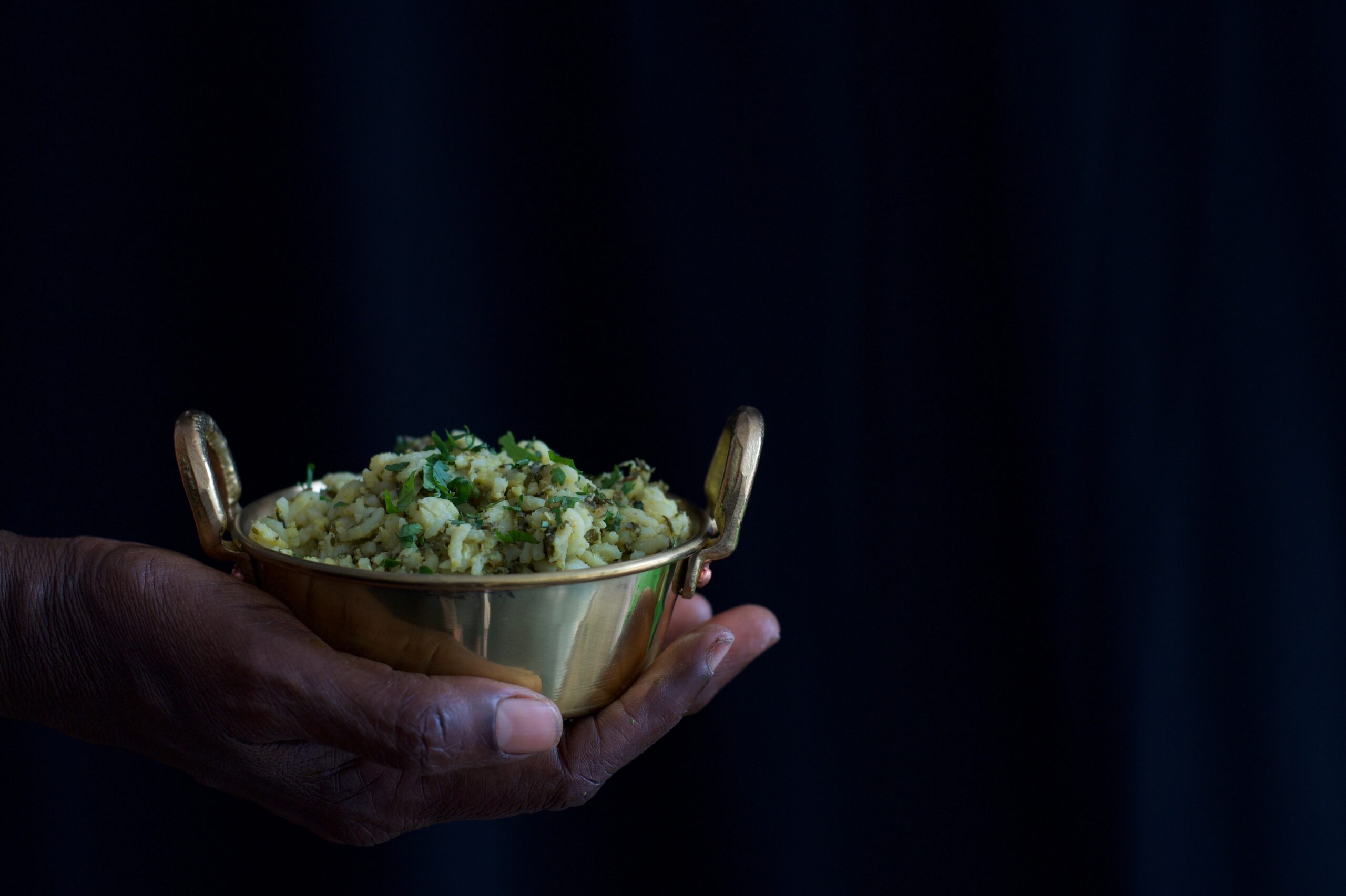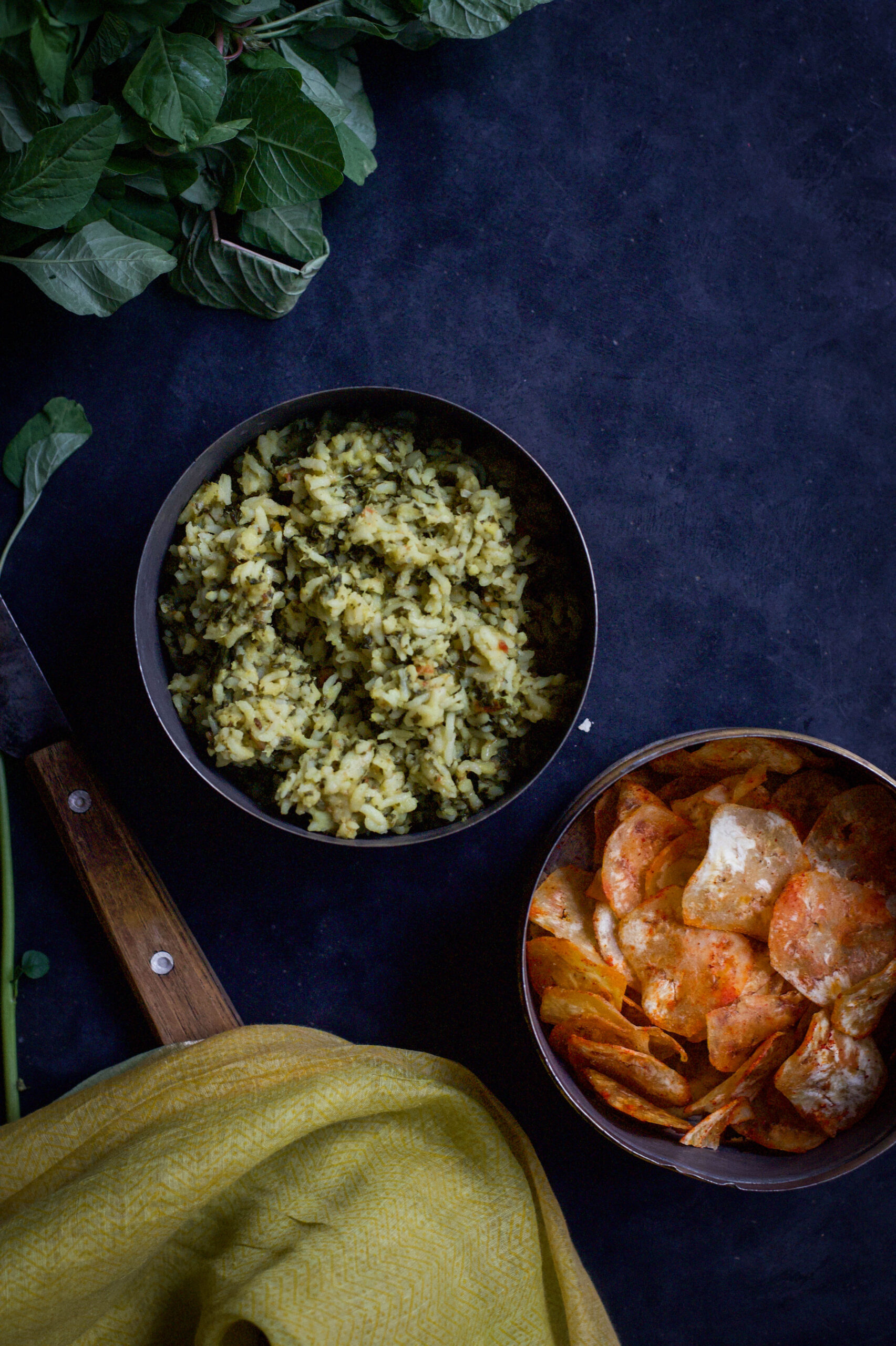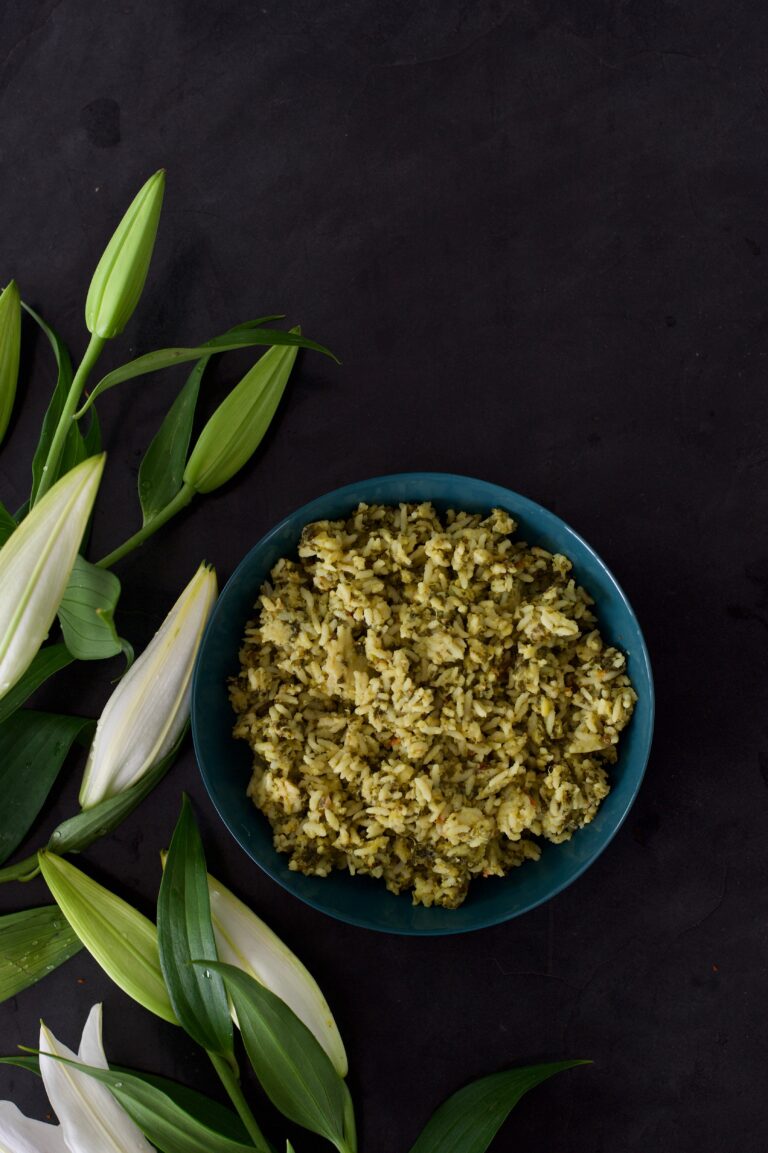When my daughter was in school, I would send her off every day with a lunchbox that contained as much variety as possible. Whether it was noodles, pizza or something else, I always made her something delicious – but with a healthy twist. Her best friend, a girl from Andhra Pradesh, brought her mother’s spinach rice in her own lunchbox every day. And the girls would exchange lunchboxes. My daughter loved that traditional spinach rice, and her best friend couldn’t get enough of my cooking experiments! When I discovered what was going on, I simply started packing extra of whatever I sent her, so both girls could eat more of our homemade meals.
Recently, this friend visited us, and the girls sat with me and reminisced about the good old days of their childhoods. Soon, they got to talking about the lunchbox swaps, and my daughter was nostalgic, saying how much she missed that spinach rice. As it is made of affordable and readily available ingredients, some variation of spinach rice is a staple in households all over the country. “Spinach” is an entire category of leafy greens. In South India, there are so many kinds available that certain dishes are matched according to the tastes of each. For instance, in Tamil Nadu, the thick small leaves of paruppu keerai (literally “dhal spinach”) go with dhal, the smaller leaves of siri keerai (“little spinach”) taste good with garlic, and are usually stir-fried with the same, and so on. What is known as dill rice in the West is also a kind of spinach rice here.
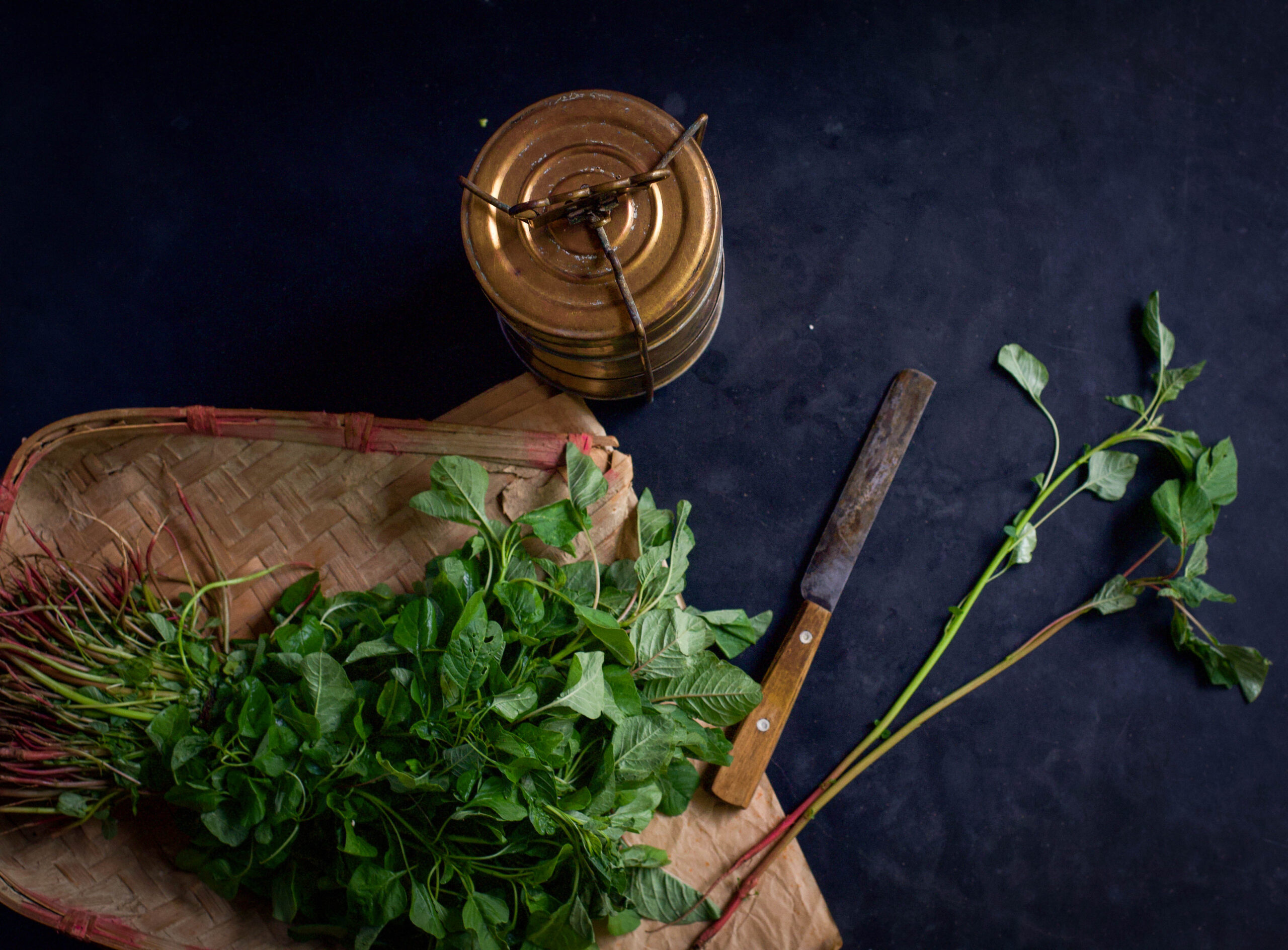

Spinach, as the cartoon character Popeye popularised, is great for developing a strong and healthy body. It is a muscle-builder, and packed with vitamins, calcium, antioxidants and other nourishing elements. It’s also collagen-rich, which means your skin and hair benefit from it. It is typically the kind of leafy green that kids resist eating, as some kinds are bitter, which is why I was so happy to find out about my daughter’s lunchbox exchanges long ago!
In my previous post, I mentioned a nifty slicer I picked up on my travels, and while these modern conveniences are much enjoyed, I still trust and hold on to our time-honoured appliances. For instance, I have the traditional Tamil aruvamanai, a hooked grater meant to be used while seated on the floor. The lovely thing about such devices is that they are durable in a way that modern devices, especially plastic ones, just aren’t. While this is mostly part of the décor, I’m not averse to using it when I want to. What better way to recreate a nostalgic dish than by using an antique appliance? I pulled out the old aruvamanai and sliced the spinach leaves for this recipe with it…
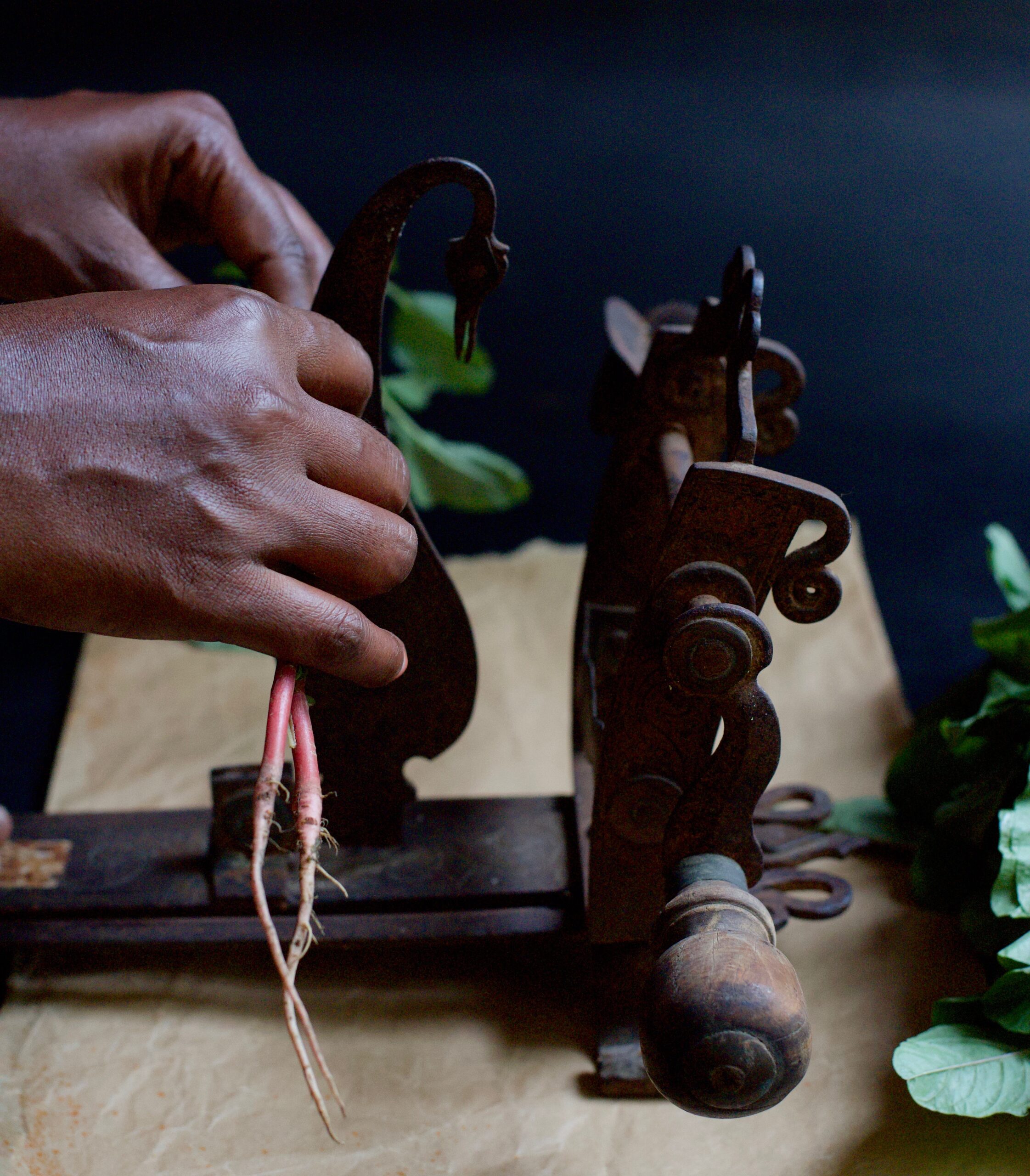
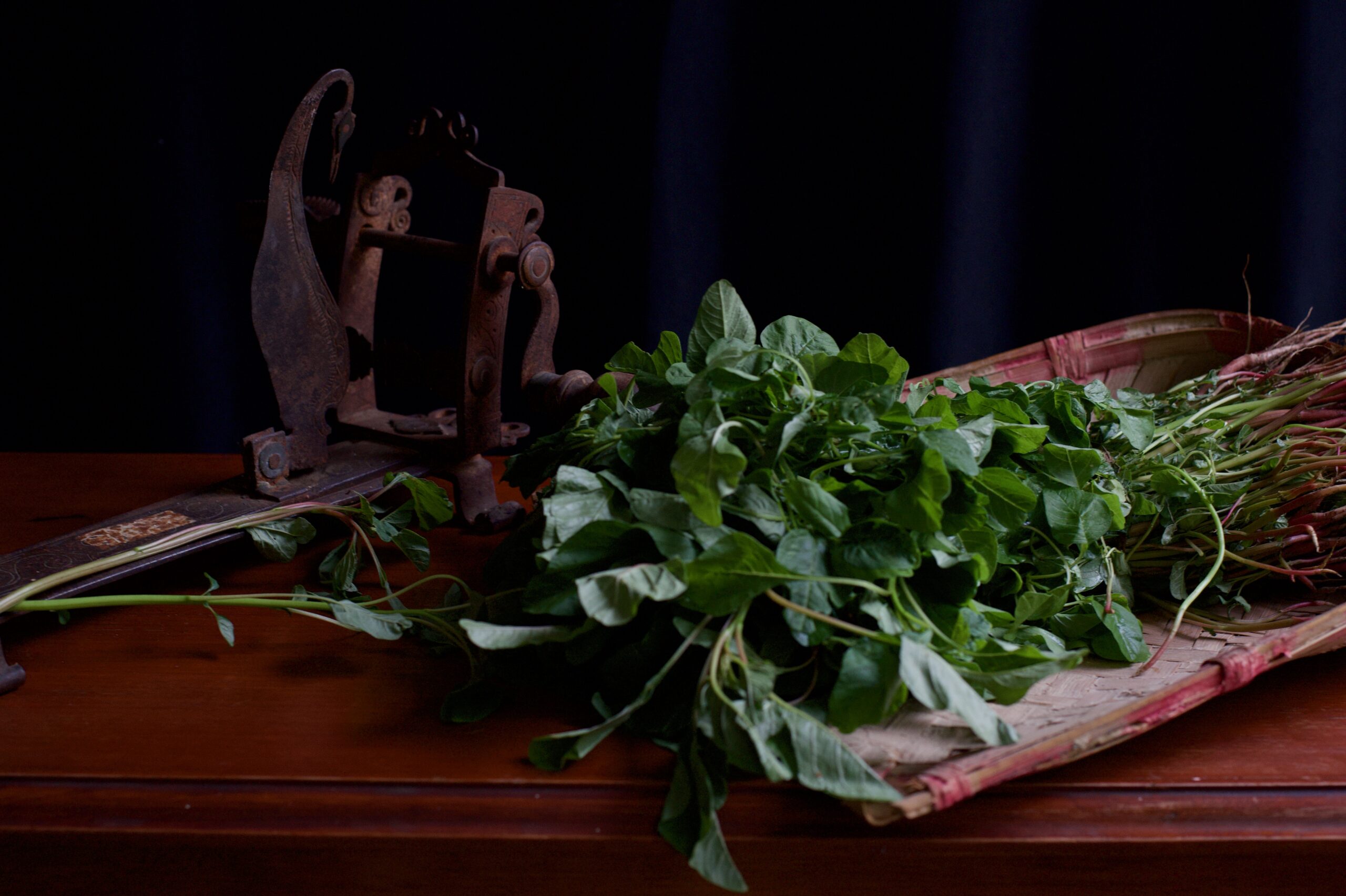
Spinach Rice
(Yield: 4-5 cups)
Ingredients
1 tomato
1 onion
2 cups spinach leaves
¾ cups raw rice
2 tablespoon mung dal
1 tooth garlic
1 green chilli
¼ teaspoon turmeric
¼ teaspoon cumin seeds
¼ teaspoon mustard seeds
1 tablespoon oil
Salt to taste
In a pressure cooker, add the spinach leaves, mung dal, onion, tomato, turmeric, chili, garlic, salt and 3 cups of water. Allow to cook for 2 whistles. In case you do not want to use a pressure cooker, you may cook the same ingredients covered with a lid on a medium flame, until well-cooked and soft to the touch.
Meanwhile, wash and soak the rice in water.
In a pan, add oil, then the cumin seeds and mustard seeds. Once they splutter, add the washed raw rice.
Now, open the cooled pressure cooker. Add the washed and soaked rice to the spinach and allow them all to cook for two more whistles. The spinach rice is now ready.
Serve hot – or in a lunchbox, for your growing children, who may surprise you with their tastes!
The Telugu cuisine of Andhra Pradesh and Telangana is known for being spicy, and the spinach rice recipe above, generously shared by my daughter’s friend’s mother, is no different. My daughter says that it tastes just like she remembered it from school. It’s in the original style, of course, but I must take credit for the most special ingredient – her mother’s love!
